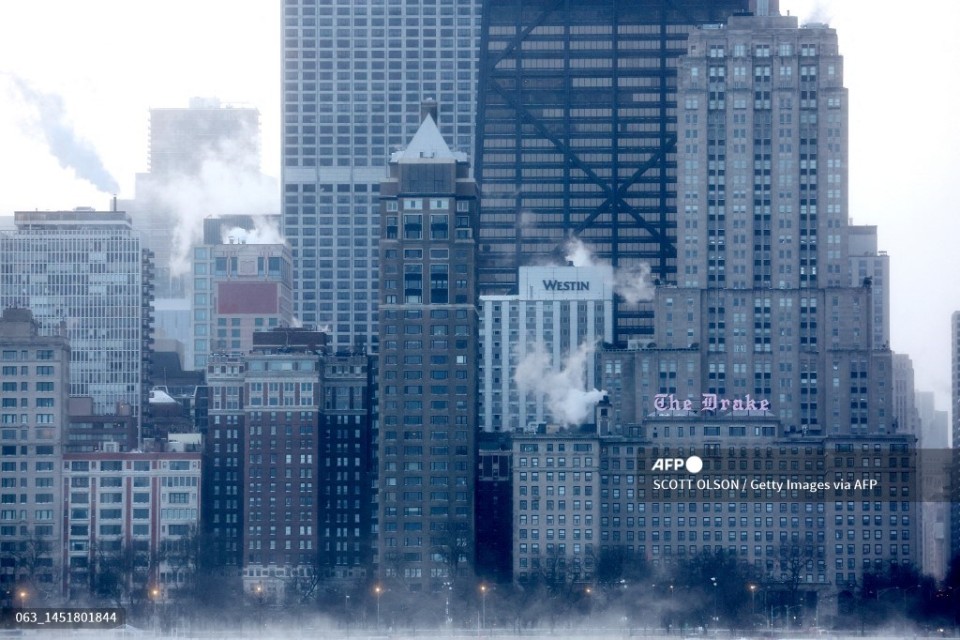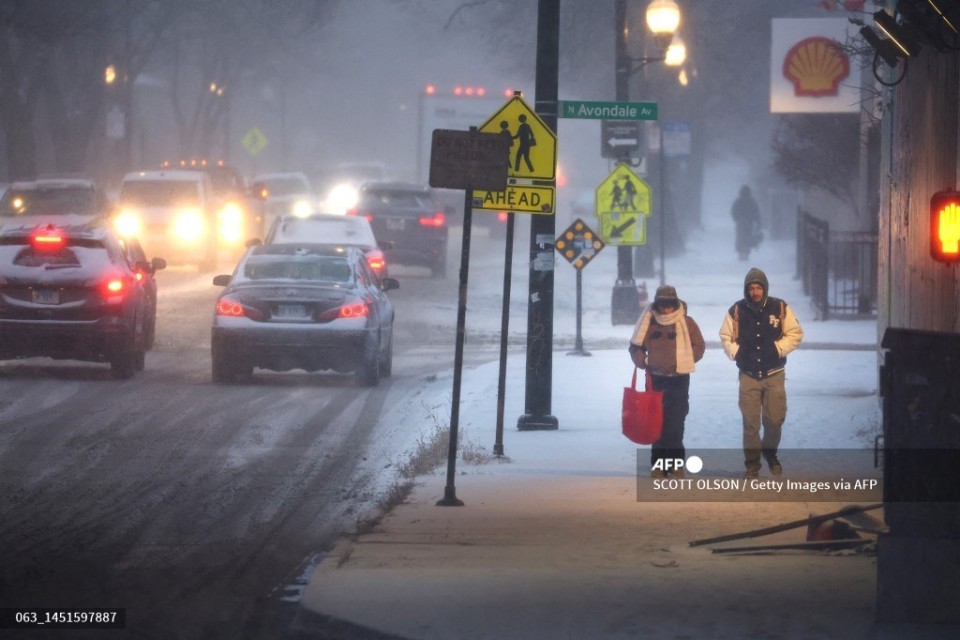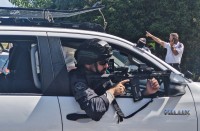
Chicago, United States (AFP)
by Kamil Krzaczynski
A historic and brutal winter storm put some 240 million Americans under severe weather warnings Friday as the United States faced holiday travel chaos, with thousands of flights cancelled and major highways closed.
Heavy snow and howling winds upended holiday plans for millions at one of the busiest times of the year, just days before the Dec 25, as a huge cold front swept down from the Arctic and took freezing hold of much of the nation, including normally temperate southern states.
Temperatures plunged below -40 degrees Fahrenheit (-40 Celsius) in some locations, with a staggering 240 million people — some 72 percent of the US population — under winter weather warnings or advisories, according to the National Weather Service.
“Winter weather hazards remain in effect from the Canadian border south to the Rio Grande (border river with Mexico), Gulf Coast and central Florida Peninsula while spanning from the Pacific Northwest to the Eastern Seaboard,” the NWS said in a report early Friday.
The warnings appear to be one of the most sweeping sets of US winter weather advisories ever.

Meteorologists said it was so cold in places — 10 degrees Fahrenheit was recorded Friday in normally mild Dallas, Texas — that anyone venturing outside risked frostbite within minutes.
The biting cold is an immediate concern for more than one million customers, mainly in the US south and east, who were without power as of Friday morning, according to electricity tracker poweroutage.us.
Road conditions remained treacherous, even as 100 million people were expected to take to the roads, according to the American Automobile Association.
Transportation departments in North and South Dakota, Oklahoma, Iowa and elsewhere reported near-zero visibility, ice-covered roads and blizzard conditions, and strongly urged residents to stay home.
Two traffic fatalities were reported in Oklahoma Thursday, while the Weather Channel quoted the Kansas Highway Patrol saying three people died in road accidents in that Midwestern state, with weather considered a contributing factor.
– Air travel chaos –
More than 3,520 US flights were already cancelled Friday and another 1,900 delayed, according to tracking website Flight Aware, many at international hubs New York, Seattle and Chicago’s O’Hare.
US Transportation Secretary Pete Buttigieg warned that holiday travel was being severely impacted.
“To say we have the opposite of cooperative weather would be an understatement,” he told MSNBC, noting that some 10 percent of US commercial flights had been cancelled Thursday, a move that will have severe knock-on effects for travel.
The I-90, a major highway running across the north was shuttered in South Dakota, with officials saying it would not reopen until later Friday.
“Crews are using all available resources from across the state to clean-up and restore travel,” South Dakota Department of Transportation said.
“Multiple highways are currently listed as ‘Road Impassable’… travel on the road segment is physically impossible due to widespread deep snow and drifts.”
Holiday travel volumes are expected to be close to pre-pandemic levels, with the busiest day on Thursday, three days before Christmas.
AccuWeather forecasters have said the storm could rapidly strengthen into what is known as a “bomb cyclone” through a process called “bombogenesis,” when the barometric pressure drops and a cold air mass collides with warm air.
– Rapid frostbite –
Such extreme weather can be dangerous, said Rich Maliawco, lead forecaster for the National Weather Service in Glasgow, Montana, where wind chill plunged to a bone-crushing -60 Fahrenheit overnight.
“When it’s this cold, anybody can run into trouble,” Maliawco told AFP.
“With these kinds of wind chills, if you’re not wearing those warm layers… unprotected skin can get frostbite in less than five minutes.”
Conditions were cold enough for people to post videos of themselves carrying out the “boiling water challenge,” where boiling water is thrown into the air and instantly freezes.
“We created our own cloud @ -17° F (-27° C) at the #Missoula International Airport,” tweeted NWS Missoula in Montana.
In Minneapolis and Saint Paul, more than eight inches (20 centimeters) of snow accumulated over a 24-hour period, the NWS said in a Thursday update.
Farther east in Buffalo, New York, forecasters called it a “once-in-a-generation storm” with wind gusts of more than 65 miles (105 kilometers) per hour, wind chills as low as -10 to -20 F, and power outages.
© Agence France-Presse








